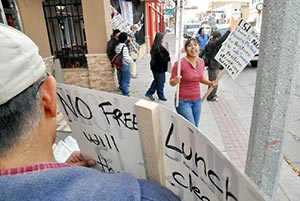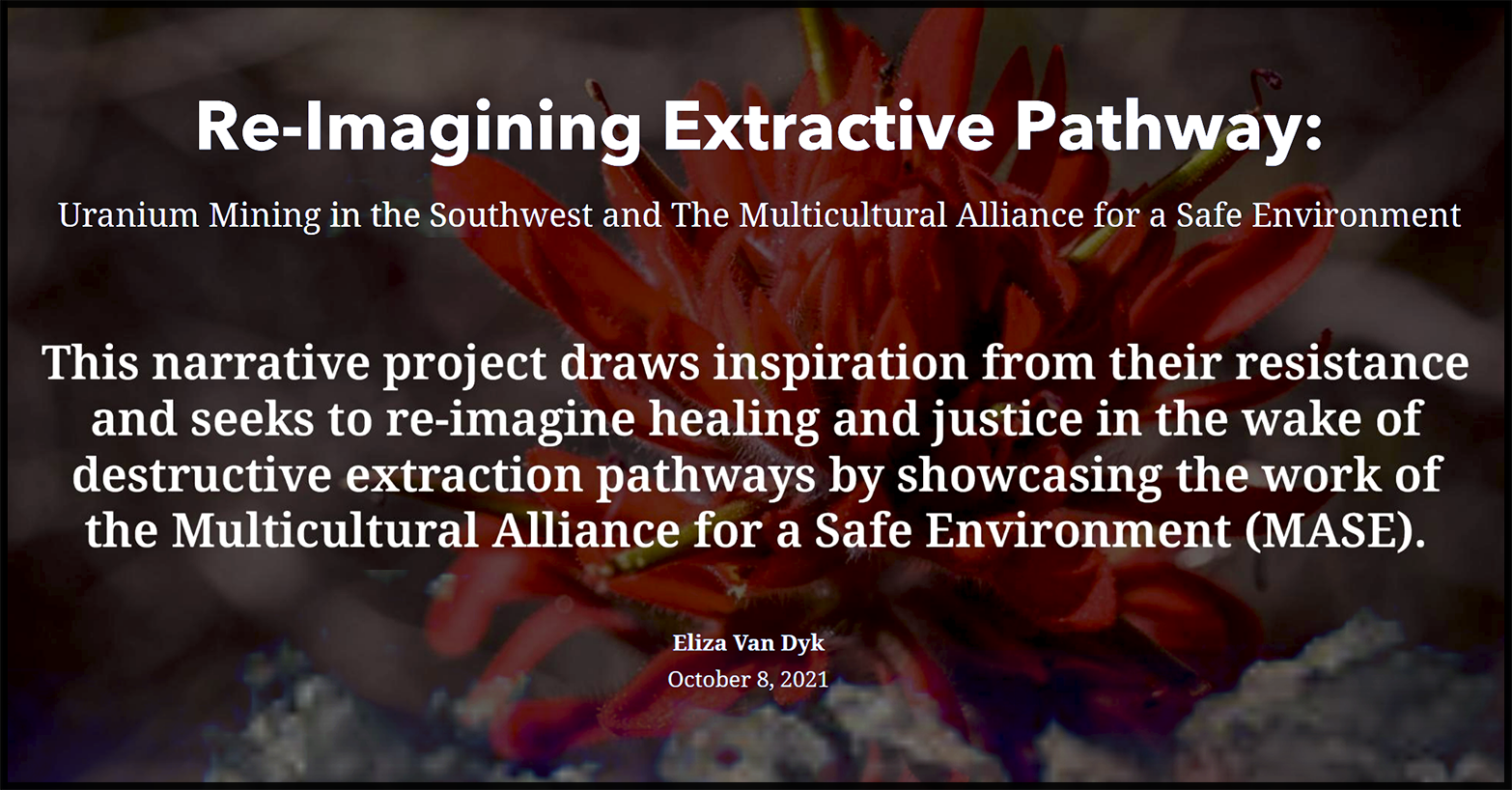Protesters picket URI speaker in Gallup

By Cindy Yurth
Tséyi’ Bureau
GALLUP, Nov. 19, 2009
Larry King, foreground, and other protestors protest against a presentatin by Uranium Resources Inc. at Sammy C’s Nov. 12 in Gallup. URI wants to reopen mining operations in the Church Rock and Crownpoint areas.
As members of the Gallup Chamber of Commerce gathered Nov. 12 for their regular “Lunch-and-Learn,” about 20 picketers strolled the sidewalk in front of Sammy C’s restaurant chanting “HRI, URI, lie, lie, lie!” and “Leetso (uranium) dooda!”
That’s because the chamber’s luncheon speaker was Richard Van Horn, vice president and CEO of Uranium Resources Inc., the parent company of Hydro Resources Inc., which wants to extract uranium on privately owned parcels of land within the boundaries of the Navajo Nation.
Several of the protestors were Navajos living in Gallup while their homes in the Church Rock, N.M., area are being cleansed of radioactive contamination left from the last wave of uranium mining in the 1970s and ’80s. The proposed new mines are near Church Rock and Crownpoint.
One of the residents, Larry King, said the protest organizers had read about the luncheon in the local newspaper and the irony was too much for them.
“They (URI) are in there buying influence from the local business community while our homes are finally being cleaned up after 30 years,” King said.
The federally funded “remediation” is being done by the U.S. Environmental Protection Agency because the original mining companies left the area or went out of business before cleaning up the mess they’d made. The protesters worry the same thing could happen again.
The protest was peaceful and no one was prevented from entering the restaurant.
Meanwhile, Van Horn was in the restaurant’s conference room talking up the virtues of in-situ leach mining, which he said is a much different procedure from the mining of the 1970s that left radioactive mine and mill wastes covering parts of Church Rock Chapter.
Van Horn explained the procedure, which involves injecting solvents into a uranium-rich rock layer, then pumping out the dissolved uranium.
“One of the misperceptions is we go in there and we crap the water up,” he told the group of about 25 businesspeople. “No we don’t. The water is already contaminated (by uranium).”
Van Horn said his Texas-based company consistently monitors any nearby aquifers with test wells to make sure the chemicals don’t spread into drinking water aquifers, and when the ore has been extracted, pumps out any remaining leach solution, cleans it through reverse osmosis and returns it to the ground.
“We take more water out than we put in, so there’s no chance of polluting the groundwater,” he said.
But King, a spokesman for Eastern Navajo Diné Against Uranium Mining, said his group has been in contact with South Texas Opposes Pollution, a grassroots organization that claims the water in nearby domestic wells became cloudy or muddy after in-situ leach mines started operating nearby.
“A mining company has never been able to return an aquifer to its natural state after ISL mining,” King said.
In a telephone interview, Van Horn said the García Hills well his company is accused of polluting was drilled “right in the middle of a uranium ore body” and already exceeded the federal limit for uranium in drinking water before URI started mining in the area. He said URI connected the local residents with another domestic water source before mining the aquifer.
http://bsnorrell.blogspot.com/2009/11/gallup-protest-uranium-mining-nov-12-at.html





